This week’s 2022 Community Initiative Award winner spotlight is on the Blairsville Underground Railroad organization in Blairsville, Indiana County.
Blairsville was laid out in the early 19th century along the Conemaugh River at the southern end of Indiana County, about 40 miles east of Pittsburgh along the planned route of the Huntingdon, Cambria, and Indiana Turnpike. Blairsville’s history and growth is closely tied to its transportation corridors – the river, the stagecoach in 1818, the canal in 1829, and the rail in 1851 – and natural deposits of salt, coal, and iron, which together supported a thriving and flourishing community.
What many may not know about Blairsville is its African American history, particularly related to abolition and the Underground Railroad (UGRR). The borough had one of the larger Black communities in Indiana County and the county’s first African Methodist Episcopal (AME) Zion Church was organized there in 1844. Indiana County was an important and active Underground Railroad stop in Pennsylvania as freedom seekers escaped from their enslavers in search of freedom.
I asked Denise Doyle from the Blairsville Underground Railroad organization to share their story with us.
Can you tell me a little bit about your organization?
It all began with a story-the story of “Newman.” Blairsville has a PHMC marker for this great rescue story. Richard Newman was a freedom seeker from Virginia who had been living in Blairsville with Lewis Johnston, a former enslaved person and active conductor on the the UGRR. A U.S. Marshall and Virginia slave hunters searching for Newman arrived in Blairsville in 1858 and attempted to kidnap him in the center of town in broad daylight. Local residents quickly mobilized and mobbed the outsiders to rescue Newman from being returned to a state that enslaved Africans and African Americans.
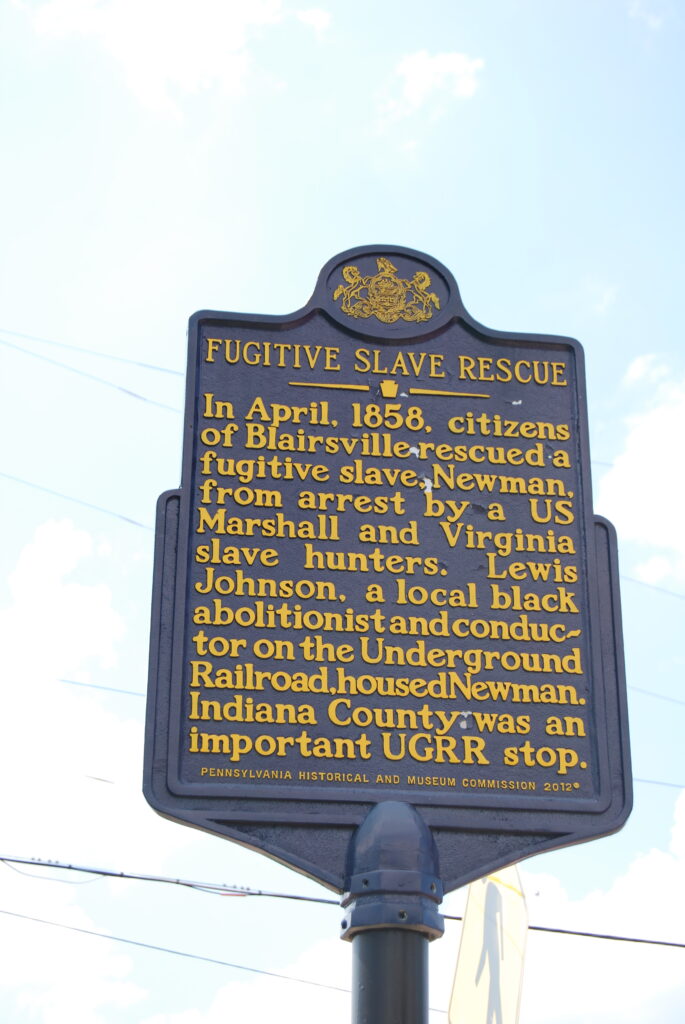
A Pennsylvania historical marker for the Blairsville Fugitive Slave Rescue was dedicated in 2012.
We, Blairsville Underground Railroad (BVUGRR), are a group of volunteers and applied to join a statewide colloquium of UGRR groups in 2006. Later that year, we acquired the Second Baptist church, built in 1917 and the former home of a predominantly African American congregation, as our history center.
The history center is our base and we have exhibits which examine life living under enslavement, the stories of Indiana County’s 93 UGRR conductors and stationmasters, the involvement of local African American soldiers in the Civil War, and our local Harpers Ferry raider.
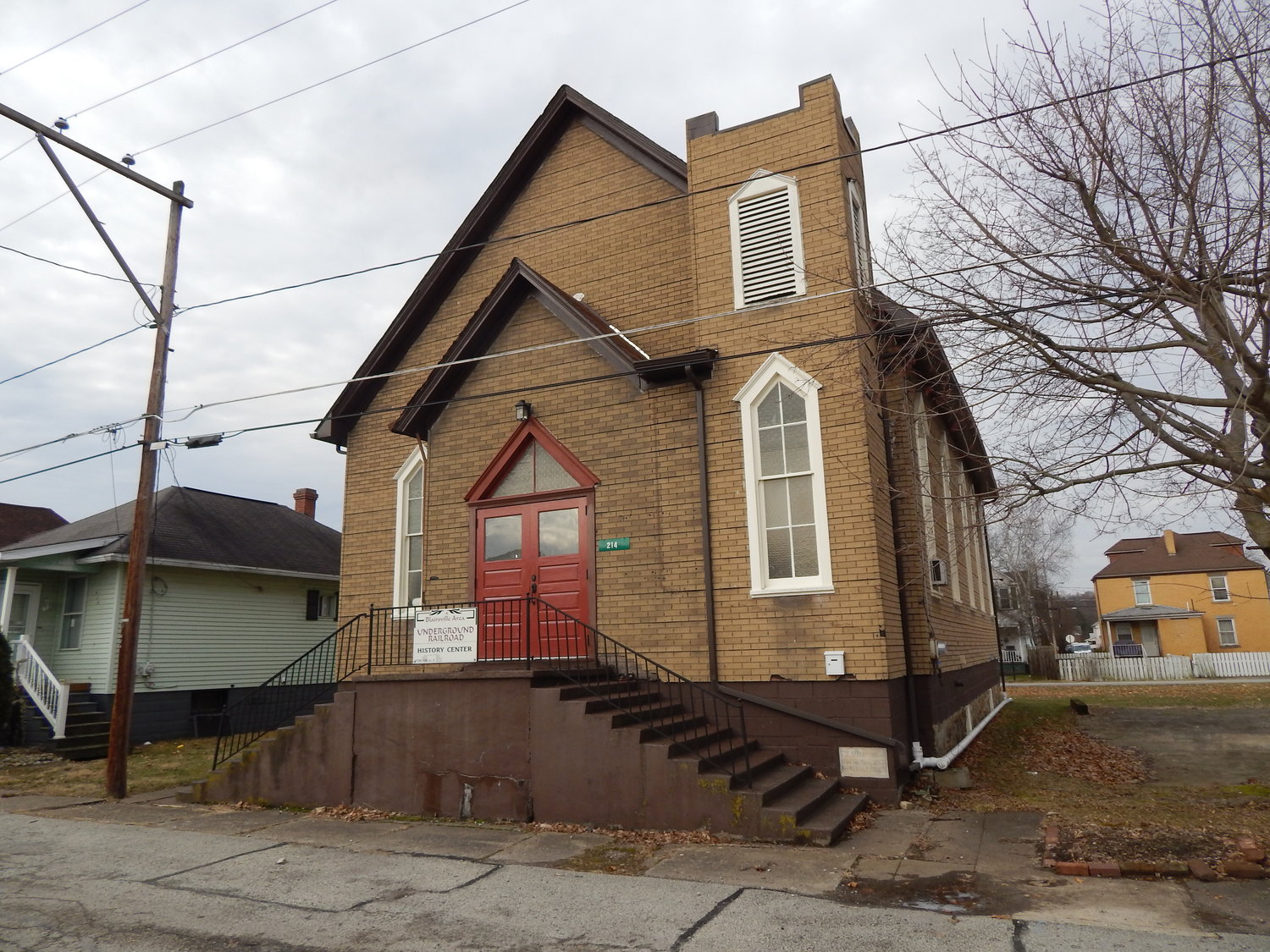
The former 2nd Baptist Church is now home to BVUGRR.
We have two computers on site which access our digital files, a small library at the center, and researchers are available for consultation and search requests. We are open Monday and Wednesday from 5-8pm and Saturday from 9am-12pm. We remain a 100% volunteer based organization and are only funded by our events, donations, and history center visitors.
We offer group, bus, school, and organization visits to our history center, speakers for civic groups, clubs, and schools, and interpretive walking tours (by appointment only). There is also a self-guided driving tour through Indiana County.
As I was doing some research about BVUGRR, I was struck by the many different events and activities you host or sponsor. What part of BVUGRR’s work do you think is the most meaningful and why?
It’s all meaningful… and fun! What I like best are our character tours. That’s when we’re out of the museum and in the community sharing stories of events and people who lived on the streets in buildings we pass every day. We love discovering these unique, significant stories and sharing them with the public (and seeing their reactions!). It’s people of all ages who enjoy our events.
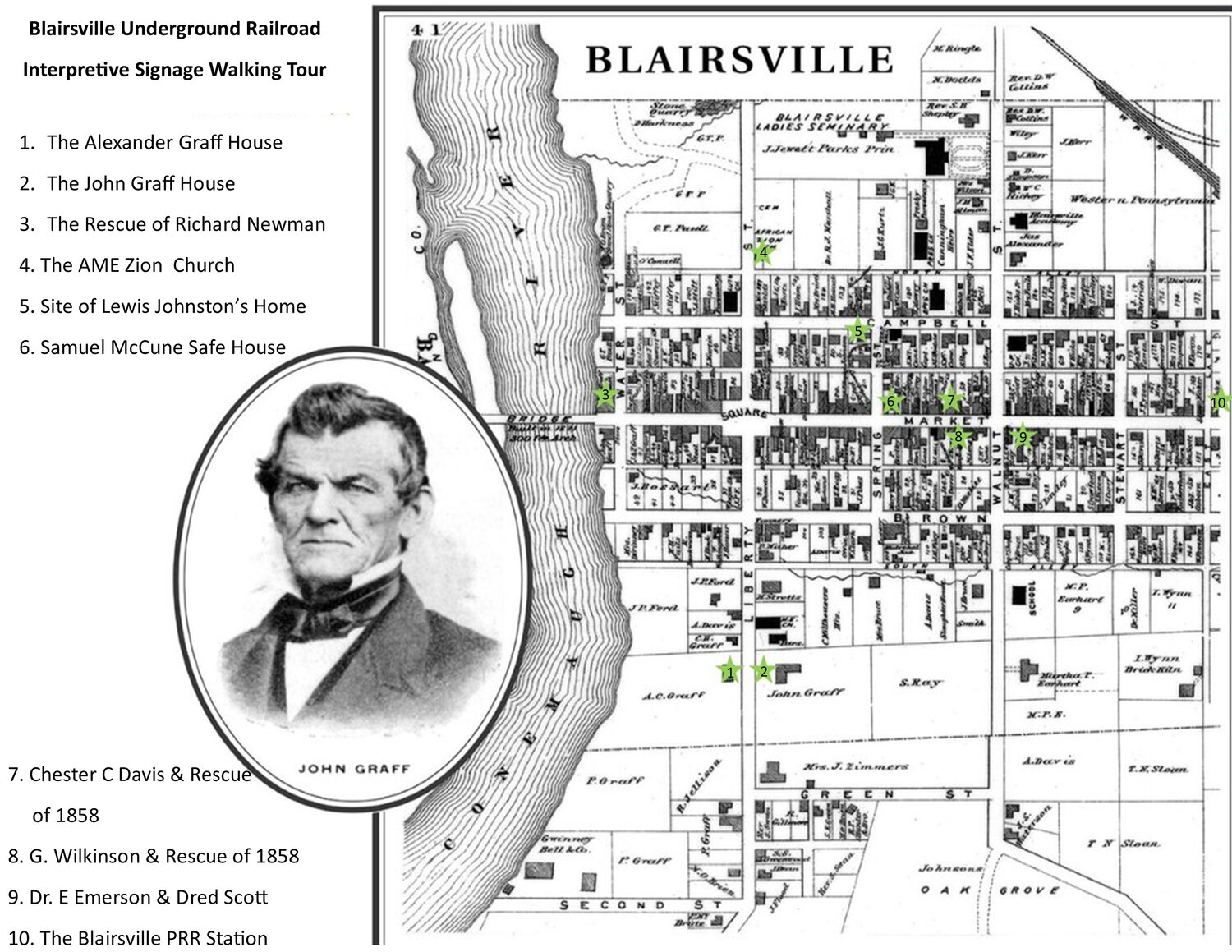
Map for the BVUGRR interpretive signage walking tour.
Stories of the UGRR fill the community with amazement, anger, pride,… a myriad of emotions. Stories of triumph, courage, and tragedy are moving and people are amazed at the depth and richness of history in our community and county. It is so cool when we find someone buried in the Blairsville Cemetery who, by rights, is famous. We allow people to meet them and hear their stories. One such example is William Smalling Peters, the man who founded the Peters Colony and single-handedly settled North Texas. And he’s buried in our cemetery. That’s pretty cool!
When we were reviewing this year’s candidates, the thing PA SHPO found most interesting was BVUGRR’s partnership with the Levity Brewing Company. Where did you get the inspiration for this idea? How many Freedom Seekers have been featured to date? Do you have another series planned?
Shortly after the George Floyd tragedy, the owners of Levity Brewing approached BVUGRR staff. They recognized that the Underground Railroad brought together people of all races, ages, and genders who worked together for a common goal – assisting courageous freedom seekers. I believe they wanted to illustrate that cooperation, love, and connectivity existed and can still exist today in our divided nation.
But they didn’t know what they could do, so we suggested that they brew us beer in honor of UGRR conductors. They suggested honoring both conductors and freedom seekers, and we suggested linking to further information with the QR codes. Their designer gave it an old-fashioned look and we wrote the stories. Nothing in particular inspired it, other than their desire to feel less helpless and our desire to tell the stories.
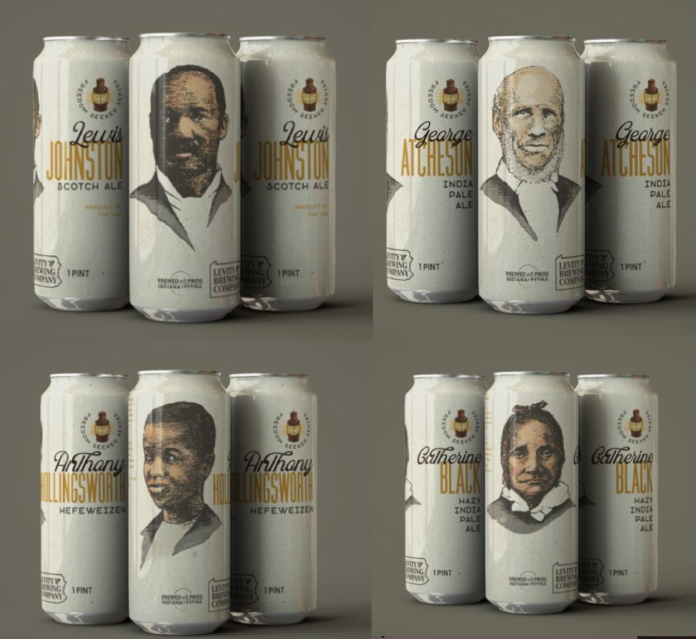
The four people featured in the inaugural four-pack of Levity Brewing Co. Freedom Seekers beer: Lewis Johnstone, George Atcheson, Anthony Hollingsworth, and Catherine Black.
Two freedom seekers and two conductors have been featured so far. The brewers were inspired by the personalities of the individuals when choosing what to brew. Levity is currently brewing a vanilla cream ale and ESB (extra special bitters) for the next series which will feature two new freedom seekers and two new conductors. The release party will be held on June 20 at Levity Brewing in Indiana, PA.
Check out this great Poured in PA video about the series.
Do you connect the Blairsville Underground Railroad story with other regional, state, or national UGRR stories?
We’ve learned that our stories are connected to regional, state, and national stories organically. For instance (and just one of many examples) through our research, we have learned that Frederick Douglass was aware of the federal case brought against Indiana, PA’s Dr. Robert Mitchell, who was sued for violating national slave acts.
As an organization, we are connected with a few UGRR groups within Pennsylvania and have shared our beer series ideas with an UGRR program in Iowa. Our beers have also travelled to Maryland, Texas, New York, and West Virginia in the hope that others will use our idea in their communities.
In our early years we reached out to historical societies in the eastern part of the US, but haven’t had much luck collaborating. With the ease of digital communication these days, it’s time to renew our efforts. The UGRR was a loose collection of individuals who were likely unaware of the actions of others within even their own county. But they were connected by common values and actions. I’d love to reconnect with the groups who were part of our original colloquium, strengthen our connections and network.
Are there other organizations, people, or companies you’d like to acknowledge for their contributions to BAUR and its success?
First and foremost are the volunteers who give of their time and talent to help bring our stories to life. This core group of people who I fondly refer to as the Passport to Freedom Players, have been interpreting historic figures of local, national, and international significance for over 15 years. The history which we present isn’t limited to the UGRR, but we tell community stories during our History at High Noon and Twilight Cemetery tours. They are amazing, all!
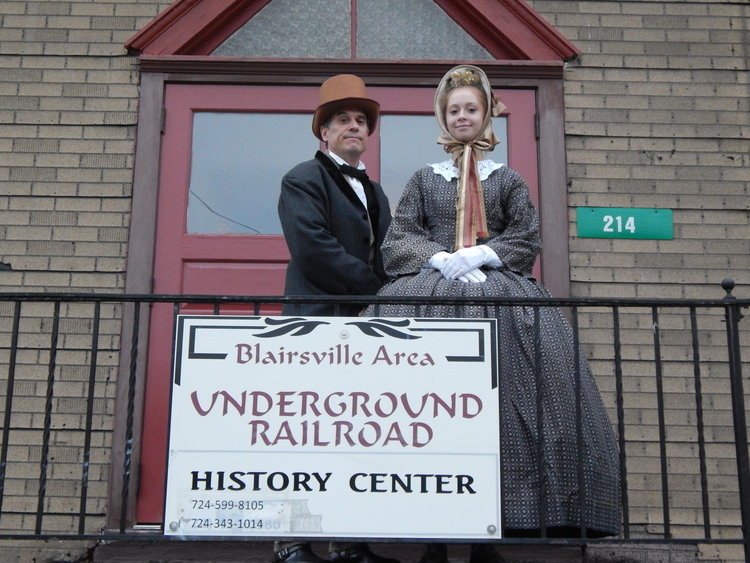
Two of the volunteer history guides at the BVUGRR History Center.
An invaluable partner with BVUGRR is Indiana University of Pennsylvania – specifically the Communications Media Department. Dr. Mark Piwinsky and his students, over the past 8-9 years, have worked with us, creating two 15-minute UGRR videos, ninety-one 1-3 minute conductor videos, voiced conductors, and recorded and photographed our tours. They are incredible partners and the students are very talented.
Three years ago, our UGRR History Center was gifted funds to purchase a furnace – thanks to the Blairsville Eagles Aerie 1488. Without their generosity, we would still be operating seasonally. And, of course, the owners and staff of Levity Brewing!!
Comment Policy
PHMC welcomes and encourages topic-related comments on this blog. PHMC reserves the right to remove comments that in PHMC’s discretion do not follow participation guidelines.
Commenters and Comments shall be related to the blog post topic and respectful of others who use this site.
Commenters and Comments shall not: use language that is offensive, inflammatory or provocative (this includes, but is not limited to, using profanity, obscene, or vulgar comments); disparage other commenters or people; condone illegal activity; identify the location of known or suspected archeological sites; post personal information in comments such as addresses, phone numbers, e-mail addresses or other contact details, which may relate to you or other individuals; impersonate or falsely claim to represent a person or an organization; make any commercial endorsement or promotion of any product, service or publication.
If you would like to comment on other topics not related to this blog post but related to PHMC, please fill out the PHMC Contact Us Form.
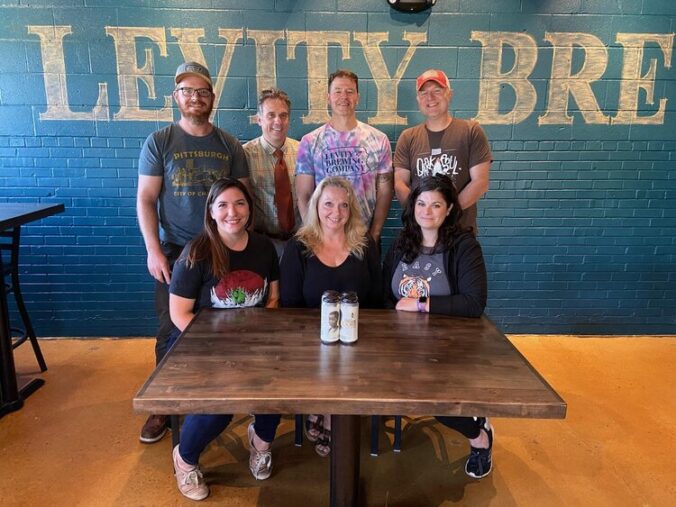
Leave a Reply